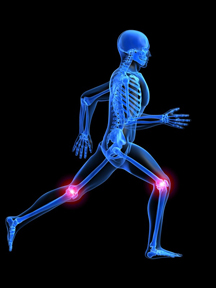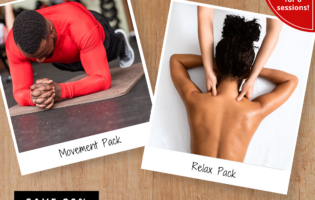Total Therapy Blog
Gearing Up for the Run… Training Principles
Training Principles – Progressive Overload for “New” Runners
 Welcome to our second part of “Gearing Up for the Run”. We are excited for the upcoming Vancouver Sun Run and hope you are too! In the up-coming weeks, we will focus our energy on getting ready for the run. In the first part of the series, we talked about the basics of running and answered the questions: Are we Built for Running? This week we will cover the basic premises of training, and discuss a running program geared towards those looking to do their first longer run (like the upcoming Vancouver Sun Run). Don’t forget to download our exclusive Running Plan located at the end of the piece!
Welcome to our second part of “Gearing Up for the Run”. We are excited for the upcoming Vancouver Sun Run and hope you are too! In the up-coming weeks, we will focus our energy on getting ready for the run. In the first part of the series, we talked about the basics of running and answered the questions: Are we Built for Running? This week we will cover the basic premises of training, and discuss a running program geared towards those looking to do their first longer run (like the upcoming Vancouver Sun Run). Don’t forget to download our exclusive Running Plan located at the end of the piece!
In training terms, the old maxim slow and steady wins the race holds true. But the question is – what constitutes slow and steady? Training operates around the principle of progressive overload. The body is a constantly remodelling tissue. If you increase the stress experienced by one area of the body, it will respond by “reinforcing” that area with new tissue. In running, this new tissue is largely muscle and bone in the lower extremities.
With progressive overload, you need to strike a balance between the stresses you put on the body, and the body’s ability to respond to those stresses. If the stresses are too low, the body won’t be pushed to remodel. If the stresses are too high, the body can’t respond fast enough, and injury results. Keep in mind, your body’s tolerance level will change as you train. Therefore, the key is to stay at or below your safe training threshold.

Fig. 1 Training Threshold
For new runners, starting with a walk-run program is recommended, especially if you are planning to run the Vancouver Sun Run. Below, find an example of a “learn-to-run” program (downloadable here). Please note: each person is unique. You may find that you are comfortable progressing at a faster level, or you may find that your body is more comfortable with a slower pace. A quick and easy way to assess whether you’re working within your training threshold is to ask yourself how you feel.
- Do you experience soreness while you run? After you run?
- Where is the soreness located?
- How quickly does it resolve?
- How are your energy levels? (Can you function in your daily life?)
- Are you having difficulty sleeping at night?
 This is by no means an exhaustive list. The basic premise is that any soreness you feel should be limited to post-run muscle fatigue, and not joint pain. You should never feel pain while you run. Moreover, any post-run muscle fatigue/soreness should resolve itself quickly (e.g. 1-2 days). Any more than this, and you could be over-stressing the tissue, breaking it down too drastically. If you’re feeling overly fatigued, or are suddenly having difficulty sleeping, it may be a sign that you’re over-training. Training puts your body in a state of stress, and if the stress level gets too high, insomnia and loss of appetite can result (just like how you may feel when you have a lot of deadlines looming at work). In all cases, it’s important to look at what you’re doing and reassess your plan. If you’re having trouble with this, a physiotherapist or kinesiologist can sit down with you and develop a new strategy.
This is by no means an exhaustive list. The basic premise is that any soreness you feel should be limited to post-run muscle fatigue, and not joint pain. You should never feel pain while you run. Moreover, any post-run muscle fatigue/soreness should resolve itself quickly (e.g. 1-2 days). Any more than this, and you could be over-stressing the tissue, breaking it down too drastically. If you’re feeling overly fatigued, or are suddenly having difficulty sleeping, it may be a sign that you’re over-training. Training puts your body in a state of stress, and if the stress level gets too high, insomnia and loss of appetite can result (just like how you may feel when you have a lot of deadlines looming at work). In all cases, it’s important to look at what you’re doing and reassess your plan. If you’re having trouble with this, a physiotherapist or kinesiologist can sit down with you and develop a new strategy.
Sample Running Plan (10km)
*always start and finish with a 5 minute walk*
Week One
- 8 x (1 min walk, 1 min run); 16 min total
- 10 x (1 min walk, 1 min run); 20 min total
- 12 x (1 min walk, 1 min run); 24 min total
Week Two
- 13 x (1 min walk, 1 min run); 26 min total
- 15 x (1 min walk, 1 min run); 30 min total
- 4 x (2 min run, 1 min walk); 12 min total
Week Three
- 5 x (2 min run, 1 min walk); 15 min total
- 7 x (2 min run, 1 min walk); 21 min total
- 9 x (2 min run, 1 min walk); 27 min total
Week Four
- 10 x (1 min walk, 2 min run); 30 min total
- 4 x (1 min walk, 3 min run); 16 min total
- 6 x (1 min walk, 3 min run); 24 min total
Week Five
- 7 x (1 min walk, 3 min run); 28 min total
- 12 x (1 min walk, 4 min run); 10 min total
- 4 x (1 min walk, 4 min run); 20 min total
Week Six
- 5 x (1 min walk, 4 min run); 25 min total
- 1 x (1 min walk, 9 min run); 10 min total
- 2 x (1 min walk, 9 min run); 20 min total
- 3 x (1 min walk, 9 min run); 30 min total
Week Seven
- 1 x (1 min walk, 14 min run); 15 min total
- 2 x (1 min walk, 14 min run); 30 min total
- 25 min run
Week Eight
- 2 x (1 min walk, 19 min run); 40 min total
- 2 x (1 min walk, 24 min run); 50 min total
- 35 min run
Week Nine
- 2 x (1 min walk, 29 min run); 60 min total
- 2 x (1 min walk, 34 min run); 70 min total
- 45 min run (optional)
Run Week
- 40 min run
- 2 x (1 min walk, 29 min run); 60 min total
- Race day!
Everyone uses different strategies, whether a personal trainer or physiotherapist designs them for you, or you make them up as you go. We’d like to get your feedback. What training plans have you used in the past? What would you do differently? Share with us in the comments below or on our Facebook Page!
Download the Running Plan here.








Follow Us!
& Stay Up To Date
BLOG